2011 Scion TC Review: First Drive

Toyota’s youth-oriented Scion brand is growing up, ever so slightly, refining its popular flagship tC model for 2011. Currently the tC boasts the youngest buyer in the industry with an average age of just 26 years old, and while Scion wants to maintain that core group of younger buyers, they’re also looking to bring in some slightly older customers (including second-time buyers) with a long list of small but important improvements.
FAST FACTS
| 1. A larger 2.5-liter engine in the 2011 tC delivers an increase of 19-hp and 11 ft-lbs of torque for a total of 180-hp and 173 ft-lbs. |
| 2. Transmission upgrades include a new 6-speed manual and 6-speed automatic, rather than the old 5-speed stick and 4-speed slushbox. |
| 3. Standard equipment includes a leather tilt and telescopic flat-bottomed steering wheel with audio controls, cruise control, A/C, sport seats, power windows and locks with remote entry, a panoramic moonroof and an 8-speaker 300-watt audio system. |
| 4. Pricing starts at $18,275 for the 6-speed manual and $19,275 for the automatic. |
It’s not the dramatic new sports car many had hoped for, with Scion instead opting for an evolutionary approach to the compact coupe. We’ll admit that a more powerful rear-drive sports car would be fun, but there’s little space in the market for such a model – especially at this price point. And with the tC already a major player in the compact coupe segment, Scion would be foolish to risk their share of this segment on a more expensive model in a smaller niche.
DESIGN EVOLUTION WITH MORE OF A TRUE COUPE PROFILE
At first look, the 2011 tC seems a tad too evolutionary, something we’ve come accustomed to from the overly conservative Toyota brand. Closer inspection, however, reveals the new model’s design appears longer with more of a true coupe profile. In comparison, the first-gen tC now looks almost as round as a VW Beetle.
Surprisingly, the new tC is actually identical in length to the old model, and it shares the same overall height. What has been changed is the width and the track at roughly 2-inches wider. That, combined with the flat-fronted nose and an overall look inspired by a racing helmet, helps deliver a masculine style that can compete with the boy-racer styled Kia Forte Koup, while also delivering a slightly more sophisticated European look.
Get the Flash Player to see this player.
NEW ENGINE AND TRANSMISSIONS WITH ADDED POWER AND ECONOMY
Under the hood, the evolution continues with a slightly larger engine and a respectable bump in power that allows the tC to jump past its competitors while still steering clear of the more hard-core (and more expensive) options like a Civic Si. A new 2.5-liter 4-cylinder replaces the 2.4 with an added 19-hp and 11 ft-lbs of torque to total 180-hp and 173 ft-lbs. More importantly, however, are two new transmission choices with a standard 6-speed manual and optional 6-speed automatic – an important step forward compared to last year’s out-dated 4-speed. The result is a 0-60 mph time of 7.6 seconds (manual) and 8.3 seconds (automatic), a drop of 0.6 and 0.8 seconds respectively.
Whether driving hard or just driving, the upgrades make a big difference. There’s a solid amount of power that continues on past the 60-mph mark. The stick-shift has reasonably short throws and is more direct than the previous 5-speed unit – a notable improvement over past Toyota boxes and one that really helps compliment the sporty look and feel of the car.
As for the automatic, it drops gears without hesitation when asked. The remainder of the time, it reaches for the highest gear possible to improve fuel economy, which is now rated at 23/31-mpg (city/highway) – a solid jump of several mpgs over the past model.
While the six-speed auto does come with a manual-shifting feature, it will only hold gears within a small window of throttle input and revs. It will automatically up-shift (which we expect), but Toyota even designed it to drop gears if you really lay into the throttle.
IMPROVED HANDLING AND RIDE QUALITY
Along with the power-bump, the sporty driving experience has been enhanced thanks to the wider track, an upgraded suspension and larger 18-inch wheels with wider 225 tires. As a front driver, understeer is still unavoidable, although we’re impressed with how much better it holds a line, not to mention the reduced amount of body roll. Another bonus is that the highway ride quality is also improved with a Corolla-esque amount of comfort.
One pleasant surprise is the electric power steering system. Used as a way to help improve fuel economy, we expected it to be vague and slow to respond and yet it has decent on-center feel and acts on inputs naturally and quickly.
In the performance (and safety) category, Scion also upgraded the brakes on the 2011 tC. Primarily this was in response to customer feedback from the original model. The rear rotors increase from 10.59-inches to 10.98-inches, while the fronts jump more significantly from 10.83-in. to 11.65-in.
We had a chance to test out cars with the upgraded TRD brake kit as well. The front binders do have a more significant initial bite, but under hard stops the lack of any upgrades for the rear mean the tail dances around – hardly a confidence-inspiring setup. Piloting the a TRD-equipped car first, we expected the standard rotors to be a letdown, but that wasn’t the case, with the stock setup delivering a progressive feel that sheds speed admirably.
A final performance note is the mostly irrelevant traction control system. For safety purposes, we’re all in favor of Toyota’s VSC (Vehicle Stability Control) setup, but while Scion claims you can turn it off in two stages (first shutting down traction control and then stability control), both systems default to the on position once above 31-mph. Now while 99 percent of Scion buyers will never take their vehicle to the track, essentially negating our criticism of this feature, the youth-oriented brand is also ensuring that number will stay at 99 percent – ignoring an important growth possibility with the more hard-core segment of buyers who often become brand ambassadors to their friends.
NEW INTERIOR ARGUABLY THE BIGGEST IMPROVEMENT
Of all the 2011 tC’s upgrades, the design might get the most looks and the engine stats might garner the most ink, but it’s the interior that draws the most praise from us. If you weren’t sure before hand, sliding behind the wheel of the 2011 tC will convince you just how all-new this new model is and where Scion is taking it.
First, the seats are surprisingly well-bolstered, immediately cuing the driver to the added performance of the new model. The incredibly thick-rimmed steering wheel continues to drive this message home, as does the flat bottom design, while the perforated leather on the wheel adds a luxurious touch. The automatic shifter is pretty standard fare, although the manual stick shift is more like the steering wheel in terms of a quality German look and feel. The setup reminds us of the Volkswagen GTI and speaks to the slightly higher demographic Scion is after with the second-gen tC.
Standard equipment in the new model is impressive with power locks and remote keyless entry, power windows with driver one-touch auto-down, A/C, a leather-wrapped tilt and telescopic steering wheel with audio controls and, of course, the tC’s trademark panoramic moonroof.
And while there are plenty of options for audiophiles, the standard setup is impressive with 8-speakers and 300 watts. Even the speaker layout and design is impressive with six-speakers in the front of the cabin, with three on each side running up the doors to the A pillar and getting progressively smaller as they go – like something you might find on a SEMA show car.
The list of standard safety equipment is also extensive, although it’s not likely to be of much concern to the car’s young male demographic. Features include eight airbags, the aforementioned traction control and vehicle stability control, a tire pressure monitoring system as well as a brake override system.
In true Scion fashion there are plenty of accessories to be had, with 45 TRD parts available at launch, including an exhaust system that gives the tC a nice sporty tone. Unfortunately no supercharger or turbocharger is available… yet.
Despite these fun parts, we’re shocked at the absence of some options – especially for a youth-oriented brand that prides itself on customization. For starters, Bluetooth is only available as a dealer-installed option and leather isn’t available at all. There’s also no option for a push-button ignition, nor is there a keyless access system. And with premium features like these available on vehicles like the Mazda3, Ford Fiesta and even the Nissan Versa, we’re a bit disappointed.
Pricing for the 2011 model reflects the overall improvements made to the car, with a new base price of $18,275 for the 6-speed manual and an extra $1,000 for the automatic. This puts it just ahead of the Kia Forte Koup and slightly less expensive than a 5-door Mazda3 equipped with the larger 2.5-liter engine.
THE VERDICT
An improvement in every area and class leader in almost all respects, the 2011 tC falls somewhat a victim to great expectations – generated, in part, by Scion. With a larger focus on racing, not to mention the hype generated by taking so long to bring this second-generation model to market, no one can be blamed for wanting something more revolutionary – especially from a car company that brands itself as such.
And as much as we love the optional TRD equipment, we’d love to see a halo model with all the performance goodies, unique styling and possibly even more power. It would be a true Civic Si competitor that would help brand the overall performance image of the tC.
Still, it looks great, has an impressive new interior and boasts added power with improved acceleration, handling and fuel economy. In all ways the 2011 Scion tC is a fitting sequel to a car that put Scion on the map.
RELATED READING
LOVE IT
- More premium interior
- Improved driving dynamics and comfort
- Added power, improved fuel economy
- New 6-speed transmissions
LEAVE IT
- Needs a halo model
- Needs better optional features
- Evolution a bit disappointing for a brand that’s supposed to be cutting edge

With AutoGuide from its launch, Colum previously acted as Editor-in-Chief of Modified Luxury & Exotics magazine where he became a certifiable car snob driving supercars like the Koenigsegg CCX and racing down the autobahn in anything over 500 hp. He has won numerous automotive journalism awards including the Best Video Journalism Award in 2014 and 2015 from the Automotive Journalists Association of Canada (AJAC). Colum founded Geared Content Studios, VerticalScope's in-house branded content division and works to find ways to integrate brands organically into content.
More by Colum Wood















![2011 MINI Cooper S Review [Video]](https://cdn-fastly.autoguide.com/media/2023/06/26/06091/2011-mini-cooper-s-review-video.jpg?size=350x220)
![2012 Honda Civic Si Review [video]](https://cdn-fastly.autoguide.com/media/2023/06/26/06105/2012-honda-civic-si-review-video.jpg?size=350x220)

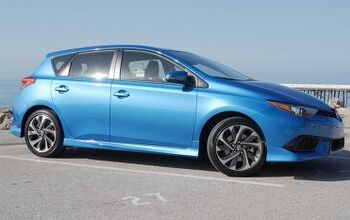
![2011 Ford Explorer Review - First Drive [Video]](https://cdn-fastly.autoguide.com/media/2023/06/26/06072/2011-ford-explorer-review-first-drive-video.jpg?size=350x220)
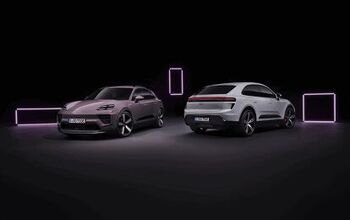
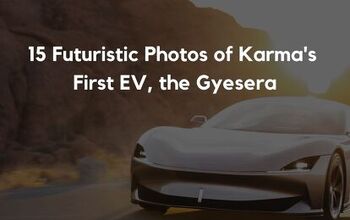

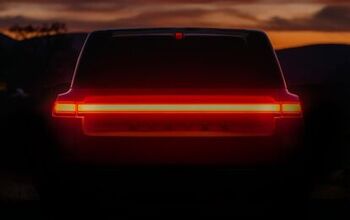


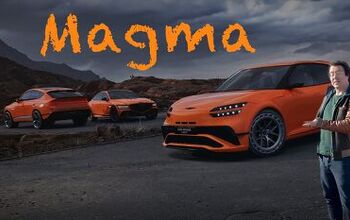

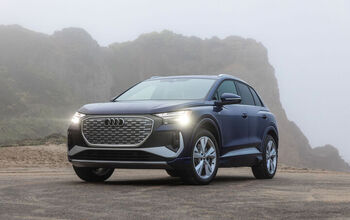
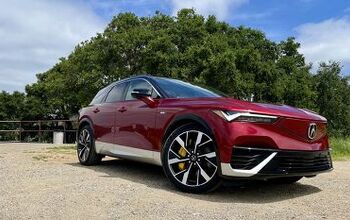



Comments
Join the conversation
Shelby Cobra http://gt36.blogspot.com/2012/06/shelby-cobra.html http://gt36.blogspot.com/2010/02/ferrari-458.html Ferrari 458 http://gt36.blogspot.com/2009/11/dodge-charger.html Dodge Charger 2010 http://gt36.blogspot.com/2010/02/dodge-charger.html Dodge Charger http://gt36.blogspot.com/2010/02/audi-tt-rs.html Audi TT RS http://gt36.blogspot.com/2010/02/lamborghini.html Lamborghini